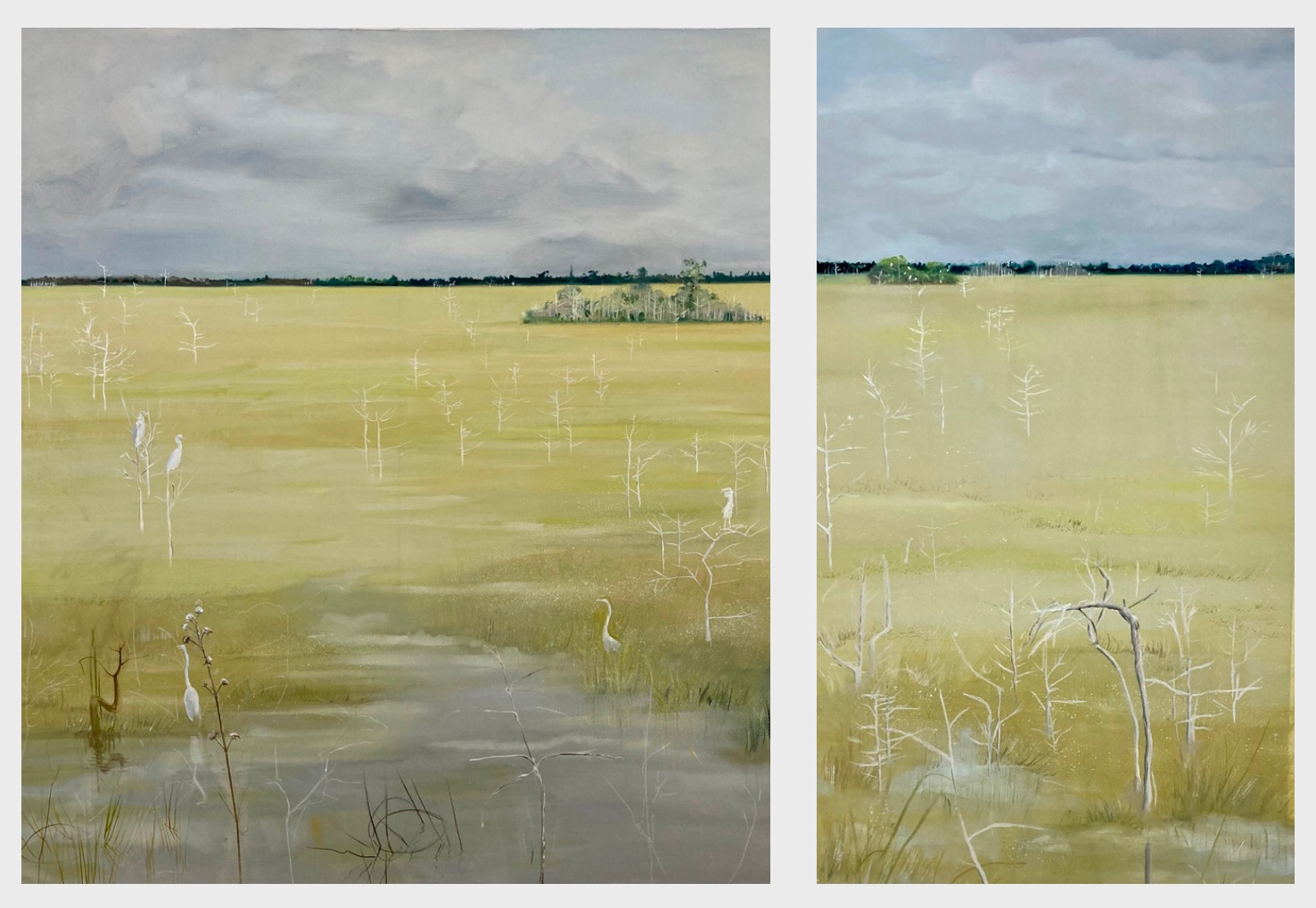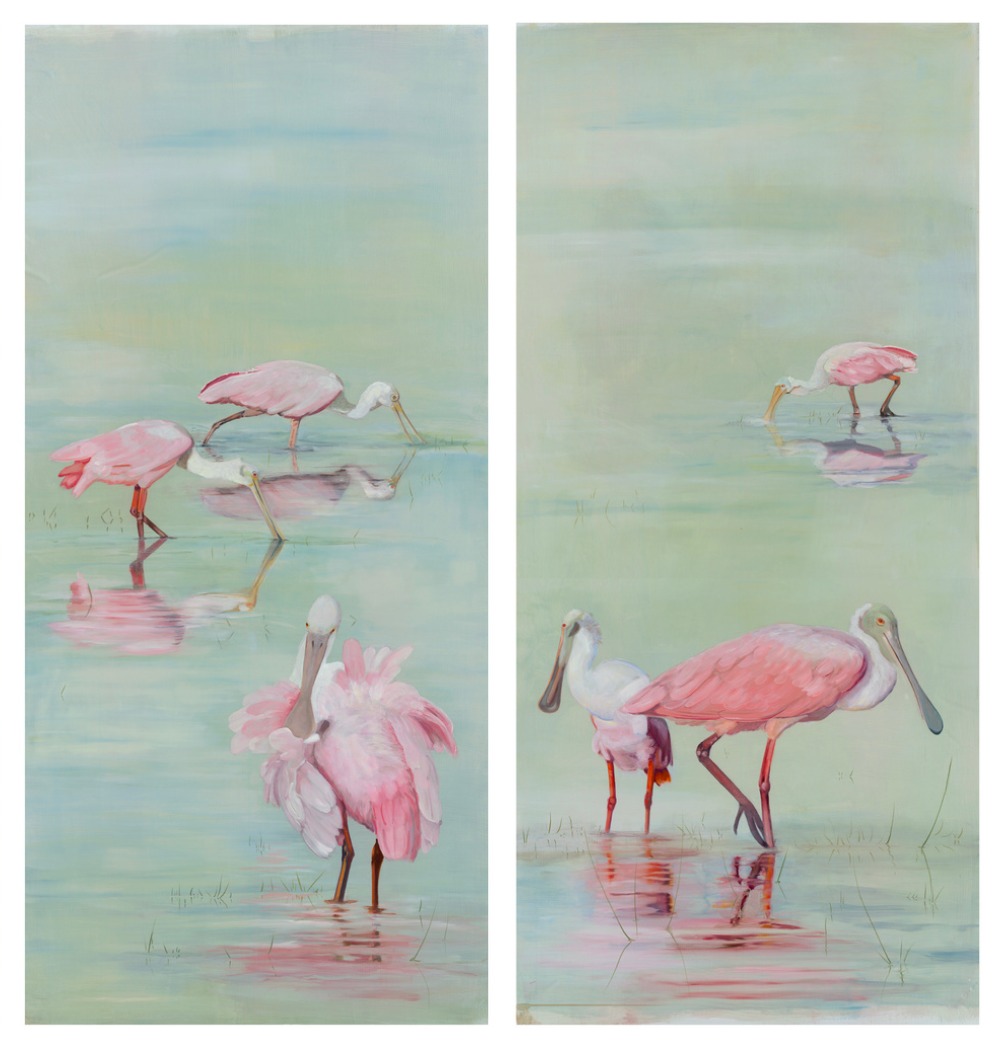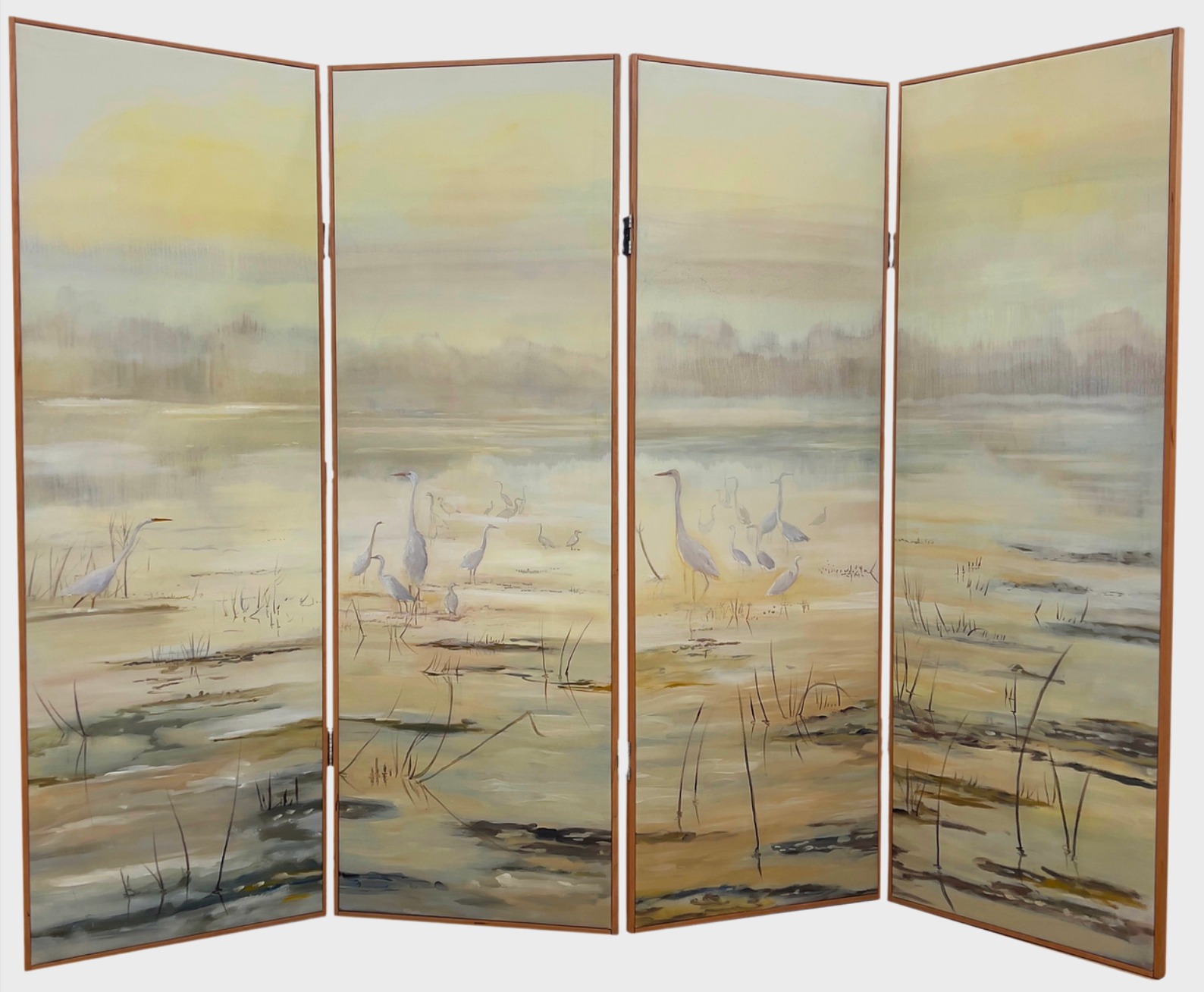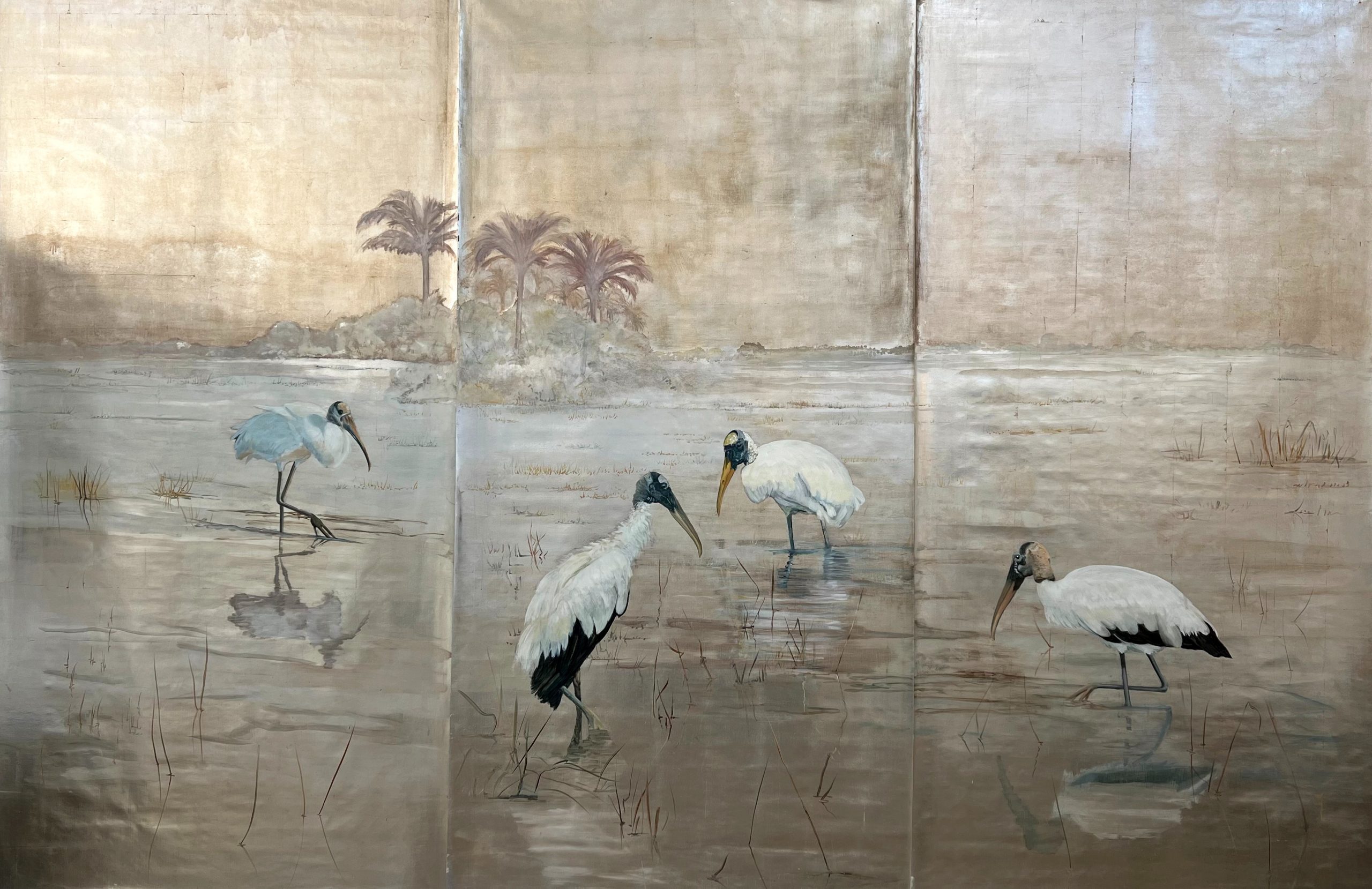ART TOPICS
BUILDING AND SAFEGUARDING A LEGACY THROUGH ART
The passing of Miami’s beloved top art patron, collector, and founder of the Rosa de La Cruz Collection sent shockwaves through the art world at the end of last February.
The sad announcement quickly was over-shadowed by the shock of the news that her cutting-edge museum collection abruptly closed, along with plans for a portion of the artworks to be consigned by Christie’s, where they finally went under the hammer in a series of sales that kicked off the evening of May 14th, in New York City.
The collection was announced it would be auctioned at an estimated $30 million (and of this publication was said to have sold for $34M). It is estimated to be way below the potential profit from the sale of upward of 1000 works from artists the likes of Ana Mendieta, Albert Oehlen, Felix Gonzalez-Torres, Glenn Ligon, Mark Grotjahn, Martin Kippenberger, Peter Doig, and Wade Guyton, amassed by Rosa and her husband Carlos de La Cruz over their lifetime together as keen and avid patrons of the arts.
To many of us who saw the collection grow from an open house invite-only to the beautiful 30,000- square-foot building helping to pioneer the gentrification of the Design District in 2009, there is a certain dismay.
And I question was this the only option available for this significant body of work? Miami will not be the same without this cultural heritage, leaving a vacuum, as the collection is disbanded.
In an interview in theMiami Herald, her husband of 60 years explained that there is a practical reason why the family chose to close the museum and sell the collection. The couple have five children, 17 grandchildren and six great-grandchildren. The taxes for the collection as well as maintaining the museum building is costly and, he said: shouldn’t be put on the next generations.
Rosa herself had replied to a query by the New York Times back in 2009, when she first opened her collection to the public, whether she would ever sell, saying, “Every collector needs to realize you can’t take it with you. The works will either go to an institution, which might not be able to show them; to your kids, who might not want them; or to an auction house.”
It turns out the latter will be the result of all those decades building what would have been her lifetime of legacy and Miami loses its cultural stock as all those pieces leave never to return. But that is an entirely other topic.
The De La Cruz family knows all too well, navigating the dynamic currents of the art market requires astute planning. All the more so for those who look to safeguard one’s art collection legacy for the future generations.
The recent Art Basel and UBS Global Art Market Report revealed both promise and peril in the art market’s trajectory, signaling a need for art collectors and estate planners to tread carefully.
Art collections, with their unique blend of cultural import and investment potential, present a challenge in estate planning. The volatility inherent in art values can complicate matters, potentially exposing estates to tax liabilities and distribution dilemmas.
To address these concerns, savvy collectors are turning to sophisticated estate freeze techniques. Family Limited Partnerships (FLP) and Limited Liability Companies (LLC) offer a structured approach to managing art collections. By transferring ownership to these entities, collectors can gift or sell shares to heirs, effectively freezing the estate value while maintaining control and enjoying tax advantages.
Grantor Retained Annuity Trusts (GRAT) provide another avenue for freezing estate values. By transferring art to a trust while retaining the right to an annuity, collectors can pass on appreciation tax-free to beneficiaries, shielding the estate from market fluctuations.
A GRAT entails transferring art to a trust, with the collector retaining the right to receive an annuity for a set duration. Any appreciation beyond the IRS- approved interest rate is then passed to beneficiaries tax-free, effectively freezing the estate value of the art at the time of transfer.
By locking in current market values and controlling the handling of collections after their passing, collectors can safeguard against the need to sell pieces in an unfavorable market.
By employing these estate freeze strategies, collectors can not only shield their estates from market volatility but also realize their legacy goals, preserving collections within the family or supporting cultural institutions.
 The Collection was located at 23 NE 41st Street, Miami, Florida and was open to the public free of charge. (photo from Rosa de la Cruz Collection)
The Collection was located at 23 NE 41st Street, Miami, Florida and was open to the public free of charge. (photo from Rosa de la Cruz Collection)
What is left of the Rosa De La Cruz Collection . On its website landing page a plain screen, a bird flying off in the distance. Departing, leaving a blank slate. When scrolling down one can see the wealth of cultural heritage the De La Cruz family built.
Similarly, Intentionally Defective Grantor Trusts (IDGT) and Qualified Personal Residence Trusts (QPRT) offer tailored solutions for preserving art assets within the estate while minimizing tax exposure.
Selling art to an IDGT in exchange for a promissory note can freeze its current value for estate purposes. The trust pays the seller an interest rate, and any appreciation beyond this rate accrues to the beneficiaries without additional estate or gift tax.
Charitable Lead Annuity Trusts (CLAT ) enable collectors to support charities while eventually passing the art to heirs. It makes fixed payments to a designated charity during its lifetime. The payment is in the form of an annuity. At the end of the CLAT’s term, any remaining assets in the trust are passed to beneficiaries or revert to the donor. The trust’s initial value decreases by the present value of the income stream to the charity, thereby reducing the taxable estate.
Other notable estate planning techniques include the Grantor Retained Income Trust (GRIT), or Dynasty Trusts, which are akin to a GRAT but allow the collector to retain the income rather than an annuity. It’s advisable to integrate this strategy with a leasing program for artwork through an FLLP or FLLC (see above).
Dynasty or Purpose Trusts offer the advantage of extending the benefits of an estate freeze strategy beyond one generation. Additionally, techniques like Self-Canceling Installment Notes (SCIN) and Private Annuities facilitate asset transfer with significant tax benefits, especially if the collector passes away before the note’s term ends.
All these definitions are a mere introduction to the art of building a lasting legacy and are meant to awaken that possibility in your estate planning. Do consult with your personal estate planner on these many options.
The ever-changing landscape of the art market underscores the importance of proactive estate planning. With expert guidance, collectors can navigate market fluctuations and ensure their artistic legacies endure for generations to come.
So, now we know, or at least begin to know.
Whether in our initial phase or away way into having amassed a rich collection, there are
numerous ways to secure our legacy.
Unlike stocks, bonds, and real estate, the emotional investment in art supersedes the financial considerations often enough, but when all is said and done, how we choose to protect our collection, and our families and heirs from future financial burden or loss of a lifetime of cultural legacy, will speak loudly as to how we lived and how we planned for the inevitable.
Daniella Sforza,
Curious Curator at Large
OMSA Gallery
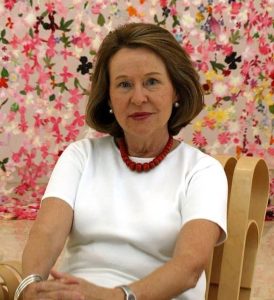
Rosa Rionda de la Cruz saw the warehouse
as “an extension” of her home.
ARTIST IN FOCUS
DERYN COWDY
Herons, 2021,
Oil on canvas diptych, 6’x 4′
Deryn Cowdy, originally from Wales, was raised on a farm among artists, who greatly inspired her to love art.
Reflecting on her upbringing, she said, “All my life I have been very interested in the environment and nature. I started painting my garden… I put in fishponds and began by photographing that.” This early connection with nature and her environment laid the foundation for her artistic journey.
Deryn’s work now on view at OMSA Gallery, is centered in the Everglades, that great River of Grass, so beloved by the pioneer conservationist, Marjory Stoneman Douglas.
Deryn’s art explores the parallels between weeds and human populations, focusing on their shared migrations and the experience of misplaced populations who, like weeds, may be welcomed in some places but forced out of others.
This theme underlines much of her work, highlighting the dynamic and often harsh reality of displacement and adaptation.
During the COVID-19 pandemic, Deryn embarked on long walks through the Everglades, capturing images that would later become integral to her work.
This period of isolation and reflection deepened her connection to the environment, as she found herself drawn to the reflections on water and the intricate organic structures of nature.
At Big Cypress National Preserve, she walked the entire 16-mile perimeter of the park, often wading into the water with her camera to photograph the flora and fauna.
Back in her studio, photography allows Deryn to re-examine these images, uncovering unexpected layers within the reflections on garden ponds and wild water surfaces.
Spoonbills, 2022,
Oil on paper, 48″ x 108″ 1 of 2 panels
Deryn Cowdy, Big Cypress 3, 2023, Archival pigment on UV poly, gold leaf, plexi frame, 64” x 40′
Elements, 2023,
4-Panel paravent screen, oil on canvas,
framed in cherry hardwood, 8′ x 6’v
Underneath the random patterns of clouds, she finds a captivating interplay of life and decay, with raw red rotting leaves, microscopic specks of mysterious life, and slime-coated aquatic plants coming together in a natural harmony.
To elevate the wonder of these images, Deryn employs precious metal leaf, such as silver or gold, to gild her photographs. This technique transforms a simple photograph into a unique window into a distant world with a glowing presence.
She pushes the limits of oxidization to create surfaces that are both beautiful and destructed, mirroring the transformative processes in nature. This method produces striking reflections and plays with light, resulting in luminous and dynamic artwork.
In addition to her photographic work, Deryn has created oil paintings and murals in soft blues and greens, pale yellows and pinks, depicting herons, spoonbills, clouds, and sea grass. These paintings evoke a sense of tranquility and calm.
Through her art, Deryn aims to bring the beauty of nature to those who may not be familiar with or have the opportunity to visit the unique environment of the marshy lands that are Florida. “I hope to bring beautiful images to people who don’t necessarily know the Everglades or have time to visit,” she said.
She also seeks to foster conversations and raise awareness about the Everglades, emphasizing its importance as a water source for many Floridians.
Her work is a testament to her deep connection with nature and her commitment to sharing its beauty and significance with a wider audience.
Daniella Sforza,
Curious Curator at Large
OMSA Gallery
Wood Storks, 2023,
Oil on silver leaf paper, 54″ x 108″ (1 of 3 panels)
PROUSTIAN QUESTIONNAIRE
JOHAN WAHLSTROM
Confessions of an Artist: The OMSA Approach to the Proust Questionnaire
Some 200 years ago, a parlor game of sorts took shape through a childhood friendship between Marcel Proust—poet, essayist, and one of the most influential authors of the 20th century—and
Antoinette Faure, who created a “confessional album” she asked him to fill out. Proust was 14 at the time, but his precociousness shone through. To the rather commonplace question “Where would you like to live?” he answered, “In the realm of the ideal, or rather my ideal.”
It is around two centuries ago since its first publication in the French literary journal Les Cahiers du Mois, after Antoinette’s son, Andre Berge, discovered the confessional among his mother’s belongings following Proust’s passing.
In celebration of Proust’s legacy, and to continue this tradition of being given the Proust questionnaire bestowing a unique honor upon the recipient.
This enduring ritual grants the tastes, opinions, and preferences of the questioned a timeless, philosophical appeal. We hope you enjoy reading the answers, as well as the questions and reflect upon your own answers.
21 Questions
-
- What do you consider the most overrated virtue?
Entitlement.2. - On what occasion do you lie?
Everyone lies at some point, but I try not to lie.3. - What is your greatest regret?
Not to travel enough discover new cultures. - Which historical figure do you most identify with?
Mahatma Ghandi. - Which artist – living or dead- do you most admire?
Paul Klee - What is the trait you most want to change in yourself?
My body weight. - What is the trait you would want to change in others?
People who hate others. - What is your greatest extravagance?
Being Me - Which piece of yours was your parent’s (mother/father) favorite, and why?
A self-portrait that I gave them as a gift. - What was the moment that you decided to be an artist?
When I was 6 years old, and my grandmother started to teach me how to draw - What do you consider your greatest achievement?
Been exhibited alongside with Gerhard Richter in Belgium. The show I did 2018 in New York, titled “From the 1960s Celebrities to Today’s Social Media, From Andy Warhol to Johan Wahlstrom” - If you could choose to come back after this life, what would you come back as?
An even better Artist - What is the most treasured piece you have created?
My large Blue Painting #126, 66×93 in - Of what was your earliest drawing?
A childish face - What did you dream of becoming as a child?
An artist (Painter) and a Rock N Roll Musician, I succeeded with both. - What is your most marked characteristic?
I don’t give up, I am very focused on achieving my goals and I am good friend always willing to help out if I can, - What do you most value about your work?
I see myself as a storyteller, reflecting on our current society. - What medium is your favorite and why?
Urethane mixed with color pigments; I create my own paintWhat period of art history would you choose to live in? - Beginning of the 20th centuryWhat will your obituary read?
- It’s Boring To Die
- What is your motto or how would you want to be quoted?
It’s Boring To Die
- What do you consider the most overrated virtue?
— Johan Wahlstrom
See Johan’s Work in the upcoming group exhibit: MINDFIELDS OF COLOR
Janet Siegel Rogers,
Jesus Rojas
Gustavo Oviedo
Johan Wahlstrom
Opening June 21, 2024.
Look for our invitation in your inbox.


